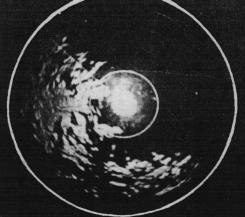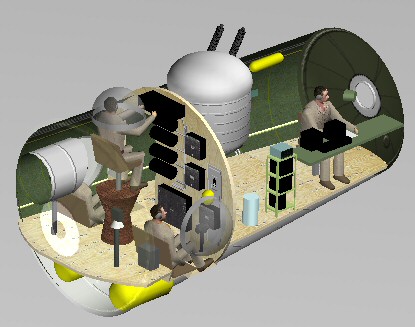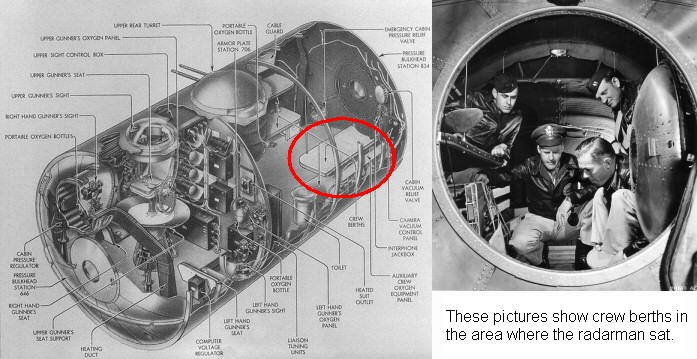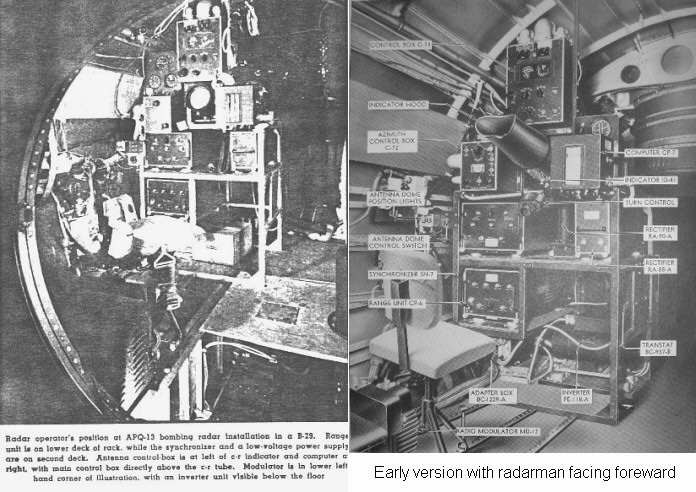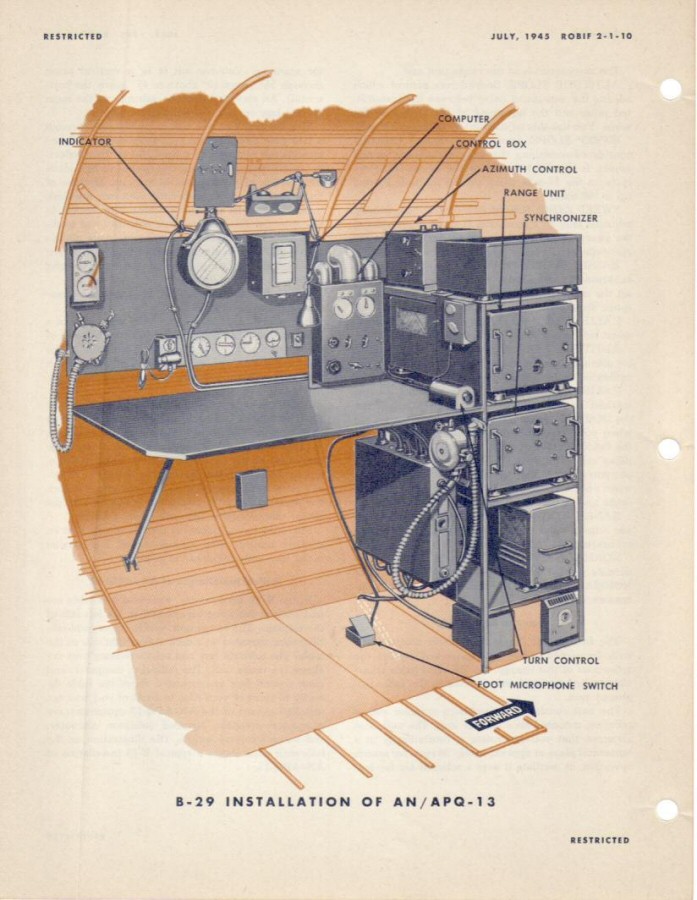
The 6th Bomb Group
The Crew: Radarman
|
The Radarman was responsible for operating the radar, used to identify target areas. Originally, the Radarman was an enlisted man. Later, the Radarman was an officer and was also trained as a Navigator and Bombardier. The Radarman was also responsible for shoving chaff (a radar countermeasure) out a tube in the back of the plane. |
|
|---|---|---|
|
Click on image to enlarge |
Camera used to take radarscope pictures, like the one to the right.
The radar operator took these pictures in addition to his other duties.
|
Radar view of Shimonoseki Straits
(Pirate's Log, p. 48) |
The Radarman Station
|
The Radarman was seated in the aft part of the aft pressurized compartment.
Most aircraft models and pictures incorrectly show this as a crew rest area. This is because the earliest versions of the B-29 (the YB-29) did not have radar installed. Instead, the area contained "fold-down" crew berths, as shown below:
In early models, the radarman sat facing forward, as shown below:
However, most radarman sat facing to the left, as shown below:
|
|---|
The AN/APQ-13 Radar

A close up view of the Radar Operator's desk area on the restored Enola Gay.
The scope (cathode ray tube) is at the left.
The range unit is in the center.
The main control box is at the right.
The B-29 was the first bomber to use radar as standard equipment. The B-29s of the 6th Bomb Group were equipped with the AN/APQ-13 radar. This radar included an H2X (3 cm) radar (aka "Mickey") and a Q-13 range finding computer. The H2X was an improved version of the British H2S 10 cm radar (aka "Stinky"). These radars could be used not only to locate targets, but for navigation and weather avoidance and for collision avoidance. In the caricature above, the radarman is looking through the radarscope and looking at something like the view to the upper right. The radarman could set the range and each circle on the scope represented a certain number of miles. Like a modern stereo system, the radar included several separate components: * Range unit [CP-6/APQ-13] |
|---|
The Radome
|
The radar antenna was housed in a radome located between the bomb bays. The first versions were partly retractable. Later versions were fixed in a more streamlined radome. The government retouched many pictures of B-29s to hide the radome because it was a high-security item. |
|---|
Crew Tasks
|
Radar proved extremely effective in the Pacific where almost everything of interest was located near a coastline - which shows up well on radar. By way of contrast, in Europe the targets were generally hidden by the ground clutter. According to Bob Crowther (radarman, 39th Squadron):
Joe Whitney (radarman, 24th Squadron) discussed the training:
[Cpt Jack I. Pankoff died on 11 May 1945 when his aircraft crashed into the ocean and exploded after taking off from Guam. All aboard were killed except the aircraft commander. This must have been one of Cpt Pankoff's first missions. Thanks to Joan Blyth for this information.] |
|---|
|
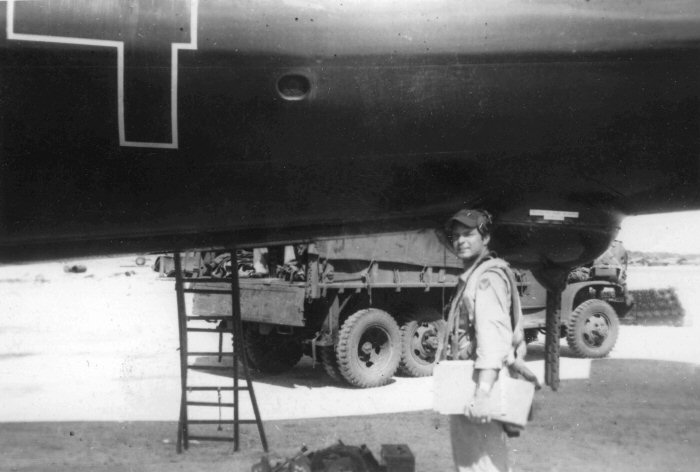
Photo courtesy of Gilbert and Paul Godin, all rights reserved.
S/Sgt Gilbert Godin prepares to board "El Pajaro de la Guerra".
|
|
To see how a mission looked to the radar operator see Radar View of Aug 8 Mission to Yawata Steel Works. |



